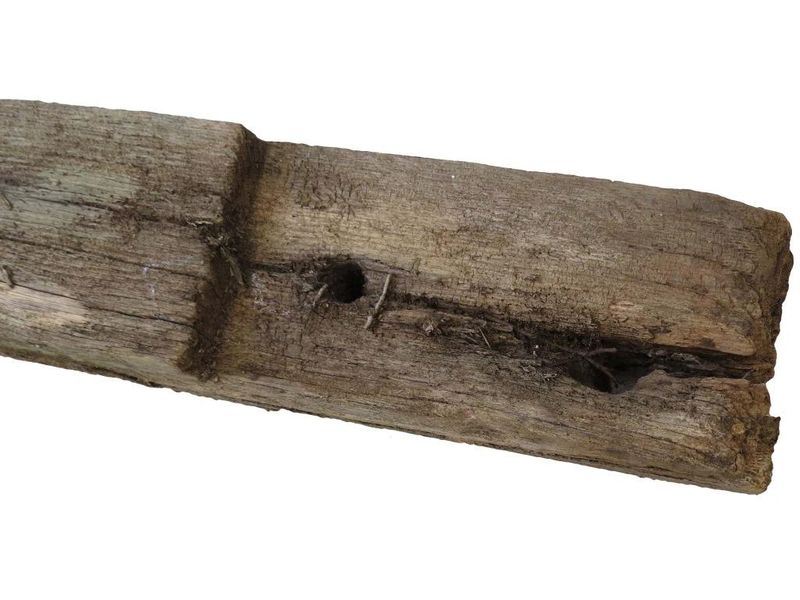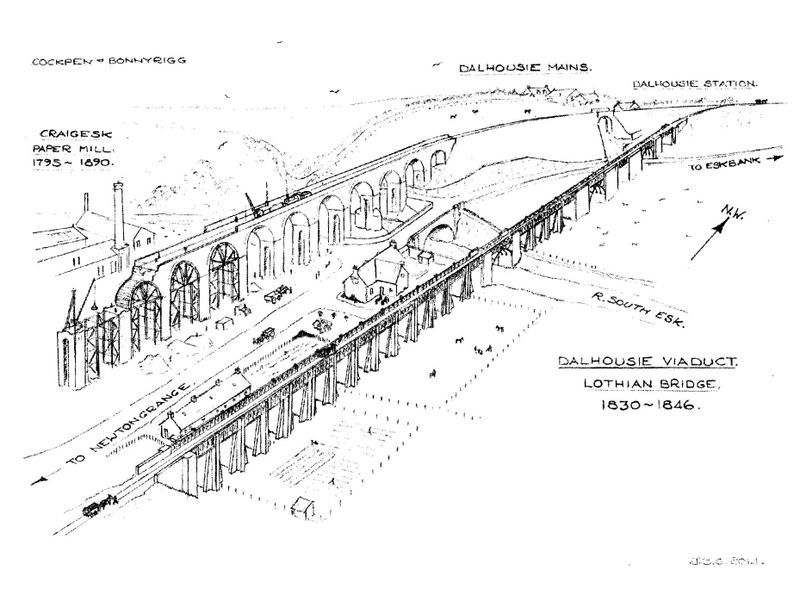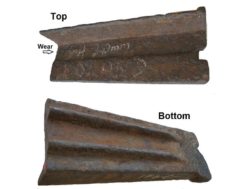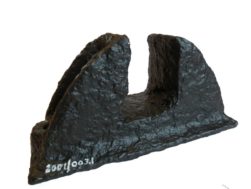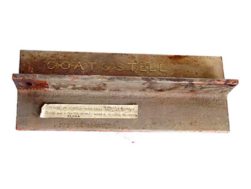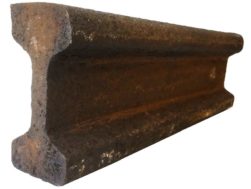Description
1.4 m length of timber recovered from the stub of the NW pier of the former Dalhousie Viaduct, Midlothian (NT 32626496). The original length of the section is not known.
“This piece of timber found on 6 September 2018 had collapsed from the NW pier stub’s NW face in the last few days and appears to be an above ground vertical remnant associated with John Williamson’s 1830 structure” (recorded by Professor Paxton following a site visit of that date led by Brian Scott, Secretary of the Dalkeith History Society). Timber very rarely survives so long but the location in this instance seems to have been sheltered. The (reported) 1,011 ft long viaduct was part of the Marquess of Lothian’s Waggonway which opened in 1832 built to extend the Edinburgh and Dalkeith Railway south from Dalhousie Mains to his coal pits at Arniston. Stone pillars and cast iron Gothic arches supported the timber structure of the bridge.
This line was subsequently purchased by the North British Railway who built the present viaduct (designed by John Miller) of twenty-three arches, part of the Borders Railway, slightly to the west of the original in 1846.
Professor Roland Paxton presented a paper entitled An appraisal of Dalhousie iron viaduct (1830-46) on the Edinburgh & Dalkeith Railway extension to a meeting of the Dalkeith History Society and members of the East of Scotland Association of the Institution of Civil Engineers on 9 March 1998. The paper describes the long-sought elevation and design details of this fascinating cast iron viaduct revealed from recently uncovered drawings (see JPEG version here).
In the introduction Paxton writes:
For more than 150 years the Galashiels road, now the A7, has twisted under a masonry and brick skew-arch of Dalhousie Viaduct. This impressive 23-arch masonry structure built by the North British Railway in 1846-47 under the direction of leading Scottish railway engineer John Miller (1805-83), justly deserves its Historic Scotland category B listing. Its site possesses the added attraction of having previously hosted one of the most remarkable early cast iron viaducts ever built, stemming from an age when the use of wrought iron in girder and truss bridges had not developed to any extent and use of cast iron, despite its brittleness and weakness when stretched was state of the art practice for economical bridge building.
When built, the first Dalhousie Viaduct was almost certainly the largest and longest early cast iron viaduct on a public railway in Scotland. Since its demolition in c.1846 the viaduct’s general description in the New Statistical Account has intrigued seekers of information about it but, in more than 30 years of research, the author has not, until recently, found any view of the viaduct or details of its ironwork. Fortuitously, when investigating Robert Stevenson’s bridge-building practice, he found Stevenson’s copies of plans of the viaduct by John Williamson dated 1830. Fortunately these plans, the only known copies, had survived in the careful stewardship of the Stevenson family.
The New Statistical Account entry for Newbattle parish written in 1839 by its minister the Rev. John Thomson reads, The Marquis of Lothian has at his own expense completed a railway from the mines one and a half miles in length, to Dalhousie Mains, where it forms a junction with the Edinburgh Company’s Railway. . In the progress of this operation, a valley of 1200 feet in breadth had to be overcome. This has been done by means of a bridge consisting of three main arches of cast iron in the Gothic style, each 65 feet span, and the one that crosses the river is 70 feet in height at the centre of the arch from its bed The other two are not so high above the ground The arches have stone piers, built from the quarries of the proprietor. Besides these there are eighteen stone pillars, ten of which are joined at the top by horizontal iron beams, and eight by beams of wood; the whole the design of Mr. John Williamson, Newton Grange, the manager of his Lordship’s colliery.
Ref: Paxton, R. An appraisal of Dalhousie iron viaduct (1830-46) on the Edinburgh & Dalkeith Railway extension. Heriot-Watt University: Civil and Offshore Engineering, 1998.
Also held by the museum is a book titled Early Railways of Dalkeith by Brian Scott (c.2017) from which the sketches shown here were taken.


